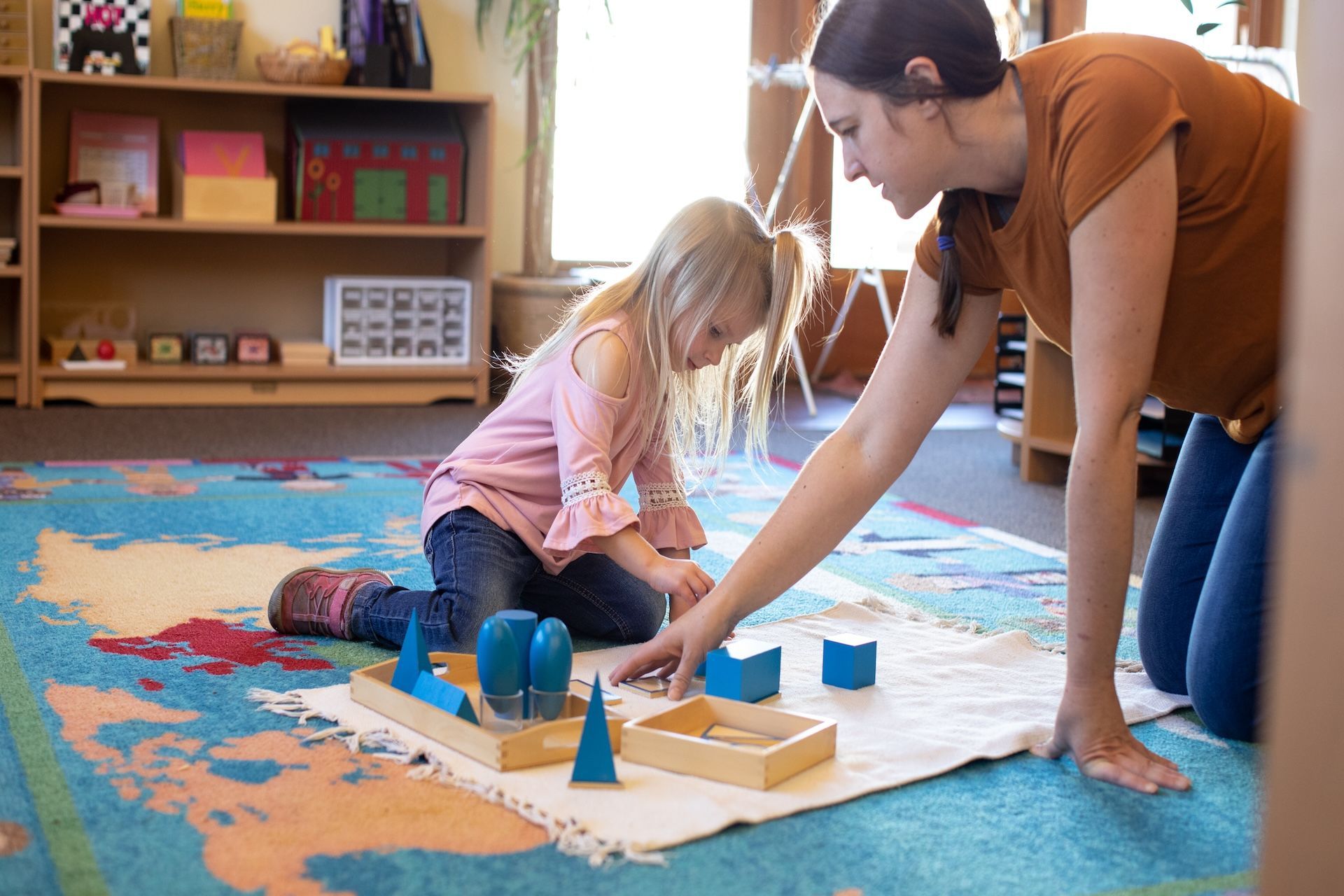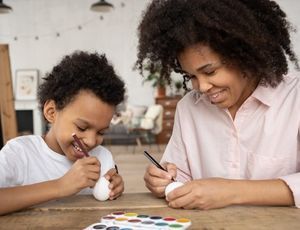A Subtle Art: The Beauty of the Montessori Three-Period Lesson

In Montessori education, we have a subtle art for connecting children to new concepts, a technique we call the Three Period Lesson. This structured approach is designed to introduce and reinforce new concepts in a way that works with children’s natural learning tendencies. It consists of three distinct phases, each serving a crucial purpose in the learning process.
The First Period: Naming
In this part of the lesson, we focus on helping children create an association of the item or sensorial perception with its name. This is basically a statement of vocabulary, but its simplicity should not disguise the great importance of this period. Proper execution is vital to success and as such Montessori guides execute this part of the lesson with extreme exactitude. We take great care to avoid any peripheral information which would serve only to cause confusion. The emphasis here is on clear articulation and repetition, allowing children to absorb the information through auditory and visual cues.
If the lesson is focused on sensorial perception, we first help a child awaken that sense before giving any vocabulary. For example, if we are introducing a very young child to the vocabulary for temperature, we use a set of thermic bottles. We first isolate the hottest and coldest of the bottles. We feel the “hot” bottle, invite the child to feel it, and state: “This is hot.” Then we have the same procedure with the cold bottle, first feeling, then stating: “This is cold.” If necessary, we may repeat the experience, associating the bottle with its attribute: “Hot….Cold.” We take great care in pronouncing the vocabulary or attributes clearly and distinctly so that children can easily absorb the vocabulary. We also make sure to avoid any additional descriptions or explanations.
The purpose of the first period is to help children connect the sensory data stored in the right hemisphere of the brain with its precise language, stored in the left hemisphere of the brain. This neural connection fixes the perception in children’s minds and provides an index to the sensorial impression, making it accessible to the conscious mind.
The Second Period: Association
In this phase, we focus on having children recognize the object in correspondence to the language. It is a way for us to see if a child has been successful in the association of the perception with its name as presented in the first period. In the second period, we use the vocabulary in a series of lively and fun declarative commands that encourage repetition.
For example, if presenting large and small with a cylinder block, we might ask: “Which one is large?” “Which one is small?” “Put the large one here.” “Put the small one here.” “Show me the large one.” “Point to the small one.” This activity has a game-like feel and offers children the chance to repeatedly hear the vocabulary and associate it with the corresponding attribute or object.
During this period, we do not ask children to recall the vocabulary. Because there is active participation that reinforces the association between the name and the object or concept, this period is about reinforcement. It is the longest of the three periods and is the most important one in terms of serving as an aid to children’s memory. Every time a child hears the vocabulary and associates it with the corresponding attribute/object, it activates the necessary synaptic connections in the brain and strengthens neural pathways.
If a child is not successful in the second stage, we have two choices: return to the first period or gracefully end the lesson and offer it again another day. It might be that a child just needs more time to work with the materials sensorially. Regardless, if the child isn’t experiencing success at this stage, we recognize that we need to re-associate the sensory impression with the name. We don’t point out the error to a child, though, because that only serves to embarrass the child or cause them to feel defeated. Nor is it helpful to continue on with the lesson, for if the associations are not happening, more repetition would only serve to cause further confusion.
The Third Period: Recall
This last part of the lesson is just a quick test and serves as a verification that a child has successfully retained the association given in the first period. For the first time, we no longer provide the vocabulary, and instead, the child must produce it from their memory. We simply ask: “What is this?” If the child can successfully answer, then we can verify that the association has been created. If the child is not successful, we end the lesson by repeating the first period. This is not done as a means of correction, but to ensure the child leaves the material with an accurate impression.
Once the Three Period Lesson is over, we allow children to continue working with the material. Often we see that they have renewed enthusiasm for the material after making these new mental associations.
-
A Powerful Approach
By following this structured approach, we provide children with multiple opportunities to engage with new information and reinforce their learning through repetition and active participation. This approach is powerful and effective for three main reasons:
Respect for the Child's Learning Pace
The three-period lesson respects the individual pace of each child's learning journey. By breaking down new concepts into manageable steps, we cater to the diverse needs and abilities of children.
Promotion of Active Engagement
Through interactive questioning and hands-on activities, the Three Period Lesson encourages active engagement and participation. Children are not passive recipients of information but rather active participants in their learning process, leading to deeper understanding and retention.
Facilitation of Meaningful Connections
By associating new concepts with real-life objects or experiences, the Three Period Lesson helps children make meaningful connections between abstract ideas and concrete examples. This approach fosters holistic understanding and lays the groundwork for future learning.
Above all, the beauty of the Three Period Lesson lies in its simplicity and effectiveness. The technique is subtle yet consistent, the lessons are brief yet powerful, and the language is precise yet expansive. Ultimately, the Three Period Lesson empowers children to become active learners, capable of exploring the world with curiosity and confidence. We invite you to schedule a tour to come see this technique in action!






